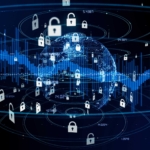What is Endpoint Detection and Response (EDR) and why is it important?
Endpoint Detection and Response (EDR), is a security technology that helps organizations detect and respond to security threats (ransomware, malware, etc.) on endpoints such as computers, laptops, and mobile devices. EDR can help ensure that sensitive data is kept secure and protected from cyber threats. It is an important component of any organization’s cybersecurity strategy and can help prevent potentially costly and damaging security incidents.
What you need to know about Endpoint Detection and Response?
There are several key things you should know about EDR to better ensure the security of your organization’s devices and sensitive data.
- EDR provides real-time threat detection and response. EDR solutions use advanced technologies such as machine learning and behavioral analysis to detect and respond to potential security threats in real-time, which can help prevent cyber-attacks before they cause damage.
- EDR can help protect sensitive data. Organizations store a lot of sensitive and confidential information, including client data. EDR can help protect this information by detecting and blocking cyber threats such as malware and ransomware.
- EDR can provide valuable insights into security incidents. EDR solutions can provide detailed reports on security incidents, including the nature of the threat, the affected devices, and the actions taken to remediate the issue. This information can help IT teams investigate and respond to security incidents more effectively.
- EDR requires expertise to deploy and manage. EDR solutions require a certain level of technical expertise to deploy and manage effectively. Ensure that your IT team has the necessary skills and resources to deploy and manage EDR effectively. If not, look into services that can help your IT department in this particular area.
- EDR should be part of a comprehensive cybersecurity strategy. While EDR can be an effective tool for protecting devices and data, it should be part of a larger cybersecurity strategy that includes practices like regular software patching, utilizing multi-factor authentication, and having good backups. Other technologies such as firewalls and antivirus software, plus the use education and awareness training, are recommended.
What is MDR and XDR, and how does it relate to EDR?
MDR (Managed Detection and Response) and XDR (Extended Detection and Response) refer to advanced cybersecurity technologies that are designed to help organizations detect, investigate, and respond to security threats.
MDR is a service provided by third-party cybersecurity vendors that offers 24/7 monitoring of an organization’s IT infrastructure for security threats. MDR providers use a combination of machine learning, behavioral analytics, and human expertise to identify and respond to potential threats in real-time. MDR providers can also provide incident response and remediation services to help organizations recover from security incidents.
XDR, on the other hand, is a newer type of security technology that goes beyond endpoint detection and response (EDR) to include other security tools, such as network traffic analysis, cloud security, and email security. XDR platforms use artificial intelligence and machine learning algorithms to analyze security data from multiple sources and provide a comprehensive view of an organization’s security posture. The key difference between MDR and XDR is that MDR focuses primarily on endpoint security, while XDR provides a more holistic view of an organization’s security posture by integrating data from multiple security tools. Both MDR and XDR can help organizations improve their security posture and protect against advanced cyber threats.







 Smoke testing is a term used to describe the testing process for servers after patches are applied.
Smoke testing is a term used to describe the testing process for servers after patches are applied.  This is a basic cost calculator for you to compute your typical monthly cost for patching your servers, PCs, laptops, tablets and associated application software. It also forms the basis for you to begin calculating your Return on Investment for software patching, or for comparison with alternatives to the manual process of patching operating systems and application software—such as Patch Management as a Service, also known as Vulnerability Management as a Service.
This is a basic cost calculator for you to compute your typical monthly cost for patching your servers, PCs, laptops, tablets and associated application software. It also forms the basis for you to begin calculating your Return on Investment for software patching, or for comparison with alternatives to the manual process of patching operating systems and application software—such as Patch Management as a Service, also known as Vulnerability Management as a Service.